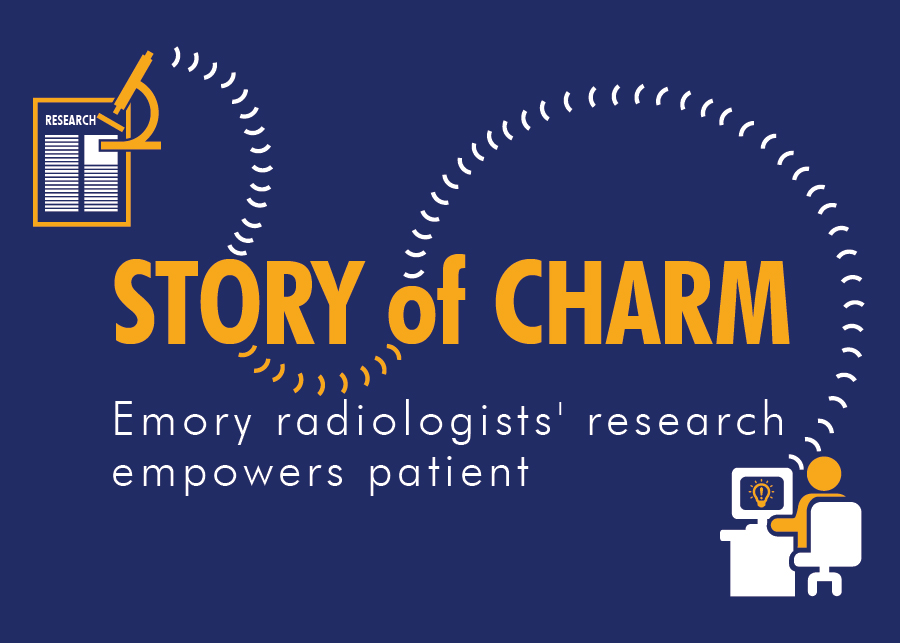Story of Charm: Emory Radiologists' Research Empowers Patient
Sep. 29, 2016

When four Emory radiologists' published an article about their brain imaging research in 2012, they had no idea how powerful it would become for a patient hundreds of miles away.
They found out nearly four years later, when lead author Ashley Aiken, MD, associate professor and neuroradiologist, received an email from Kathy (full identity withheld to protect patient privacy).
“I wish I had come across your research months ago,” Kathy wrote. She then described in a shorthand only a doctor could understand how she was diagnosed in 2009 with Chiari 1 malformation, a rare condition when the skull is abnormally small or misshapen and forces brain tissue, called cerebellar tonsils, to extend into the spinal canal. After years of symptoms and two more MRIs, Kathy was told to have decompression surgery. A sudden psoriasis outbreak postponed the surgery, which was when Kathy came across the research article.
Our research looked at idiopathic intracranial hypertension, or IIH,” Dr. Aiken explains, “which is a syndrome of elevated intracranial pressure without an identifiable cause. It’s important because it can mimic Chiari 1 malformation on MR imaging. Like Chiari 1, IIH can also have cerebellar tonsils extending below the base of the skull. We were also identifying other imaging features that could help with a differential diagnosis.”
Making the right diagnosis is essential because treatment for the two conditions is very different. Chiari 1 responds well to decompression surgery. First-line treatment for IIH, however, is not decompression surgery, but, rather shunting to drain cerebrospinal fluid buildup.
“Through our research, we showed that the finding of low cerebellar tonsils should not only lead to one diagnosis (Chiari); it can also be seen in IIH, among other possibilities.”
These differences mattered a great deal to Kathy, who read the article on-line and went back to her doctors, who then determined her case more accurately fit IIH.
“At this point,” Kathy wrote, “I guess I am grateful that by having annoying scalp psoriasis I at least did not have decompression surgery without knowing that Chiari maybe mimics or coexists with IIH as well as the potential (CSF) leakage issue. You have given me an opportunity to continue to ask questions as a patient to make sure risks & potential rewards in treatment of my symptoms are understood. Thank (you) so much.”
Dr. Aiken is particularly struck by the power to make a difference in the digital age. “We don’t necessarily think about the implications of our publishing activities,” she says. “Once the research article comes out, we don’t know where it will go and who it will benefit. In reality, we now have an opportunity to speak directly to patients through our research, which patients can access with just a few clicks of the mouse. Kathy’s story is a wonderful example of how important it is for us to rethink how—and where—radiologists can interact with patients.”
*See Aiken, A.H., Hoots, J.A., Saindane, A.M., & Hudgins, P.A. (2012). Incidence of cerebellar tonsillar ectopia in idiopathic intracranial hypertension: A mimic of the Chiari I malformation. American Journal of Neuroradiology, 33, 1901– 1906. doi: http://dx.doi.org/10.3174/ajnr.A3068



